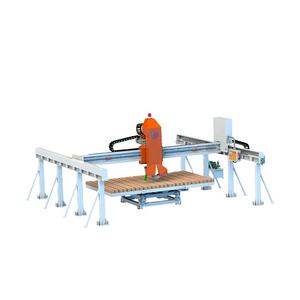Diamond Wire Saw Stone Cutting
 Diamond wire saw stone cutting is a popular method of cutting stone that involves the use of a diamond-coated wire to cut through the material. This process is highly efficient and effective, making it a popular choice for industries that require precise and clean cuts on various types of stones. In this article, we will explore the diamond wire saw stone cutting process in depth, including its benefits, applications, and best practices.
The Basics of Diamond Wire Saw Stone Cutting
Diamond wire saw stone cutting is a technique that uses a thin wire coated in diamond particles to cut through a wide range of stone materials. The wire is attached to a machine that pulls it through the stone, using the diamond particles to create a clean and precise cut. The diamond-coated wire is highly durable and can cut through even the hardest of stones, making it an effective tool for industries such as construction, mining, and manufacturing.
Benefits of Diamond Wire Saw Stone Cutting
One of the key benefits of diamond wire saw stone cutting is its precision. The diamond particles on the wire are highly effective at cutting through stone in a precise manner, which makes it an ideal choice for industries that require accurate cuts. Another benefit of this cutting method is its efficiency. Compared to traditional cutting methods, diamond wire saw stone cutting can be done quickly and without creating a lot of dust and debris, making it a safer and more environmentally friendly option.
Diamond wire saw stone cutting is a popular method of cutting stone that involves the use of a diamond-coated wire to cut through the material. This process is highly efficient and effective, making it a popular choice for industries that require precise and clean cuts on various types of stones. In this article, we will explore the diamond wire saw stone cutting process in depth, including its benefits, applications, and best practices.
The Basics of Diamond Wire Saw Stone Cutting
Diamond wire saw stone cutting is a technique that uses a thin wire coated in diamond particles to cut through a wide range of stone materials. The wire is attached to a machine that pulls it through the stone, using the diamond particles to create a clean and precise cut. The diamond-coated wire is highly durable and can cut through even the hardest of stones, making it an effective tool for industries such as construction, mining, and manufacturing.
Benefits of Diamond Wire Saw Stone Cutting
One of the key benefits of diamond wire saw stone cutting is its precision. The diamond particles on the wire are highly effective at cutting through stone in a precise manner, which makes it an ideal choice for industries that require accurate cuts. Another benefit of this cutting method is its efficiency. Compared to traditional cutting methods, diamond wire saw stone cutting can be done quickly and without creating a lot of dust and debris, making it a safer and more environmentally friendly option.

Applications of Diamond Wire Saw Stone Cutting
Diamond wire saw stone cutting is used in a wide range of applications across various industries. In construction, it is used to cut through stone materials such as granite, marble, and limestone to create precise shapes and sizes for building facades, countertops, and flooring. In the mining industry, diamond wire saw stone cutting is used to extract stone materials from mines, such as diamonds and other precious stones. In manufacturing, it is used to cut through a wide range of materials, including ceramics and glass.Best Practices for Diamond Wire Saw Stone Cutting
To ensure the best results when using diamond wire saw stone cutting, there are several best practices that should be followed. First, it is important to select the appropriate diamond wire saw for the stone material being cut. Different types of stone have different hardness levels, which require different types of diamond wire saws for effective cutting. Second, the machine used to pull the wire through the stone should be well-maintained to ensure optimal performance. Regular cleaning and maintenance of the machine can help prevent damage to the wire and ensure accurate cuts. Lastly, safety should be a top priority when using diamond wire saw stone cutting. Operators should wear appropriate protective gear, and the area around the cutting site should be cleared of any debris to prevent accidents.Advancements in Diamond Wire Saw Stone Cutting
In recent years, there have been several advancements in diamond wire saw stone cutting technology. One such advancement is the use of robotics to control the cutting process. Robotic cutting systems can offer increased precision and efficiency, allowing for even more accurate cuts. Additionally, advancements in diamond coating technology have led to the development of stronger and more durable diamond-coated wires, which can cut through even the hardest of stone materials. Diamond wire saw stone cutting is a highly effective and efficient method of cutting through a wide range of stone materials. Its precision, efficiency, and versatility make it an ideal choice for industries that require accurate cuts on various types of stone. By following best practices and taking advantage of advancements in technology, diamond wire saw stone cutting can continue to offer high-quality cutting solutions for years to come.Request for Quotation
[contact-form-7 id="59" title="Contact form 1"]




